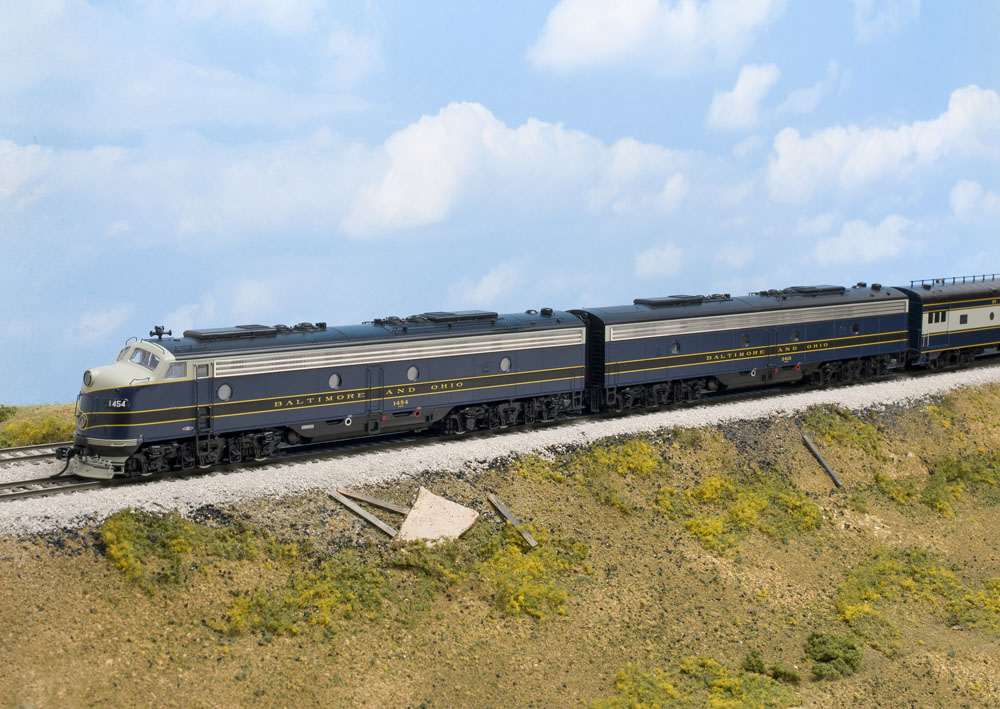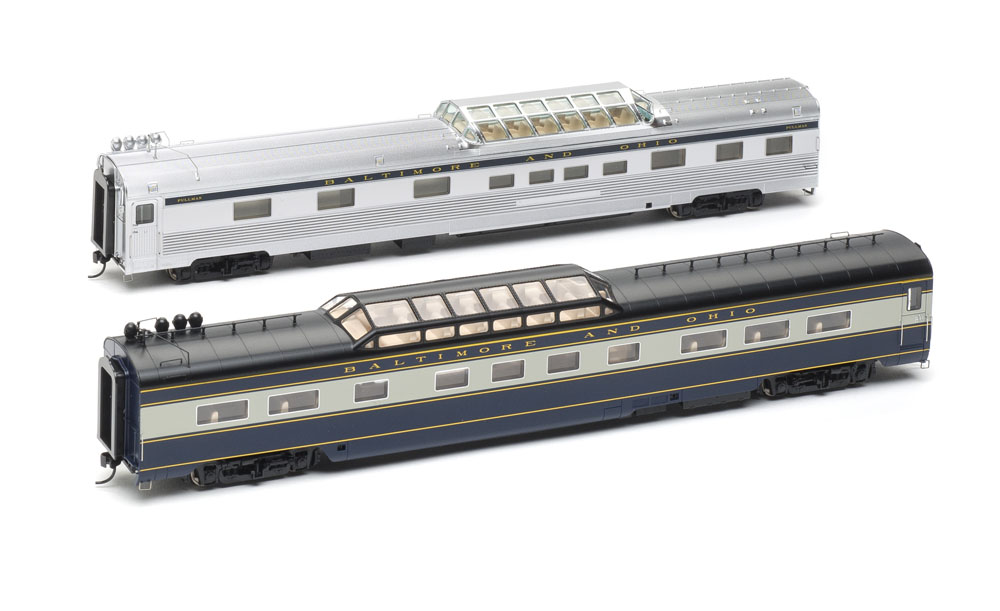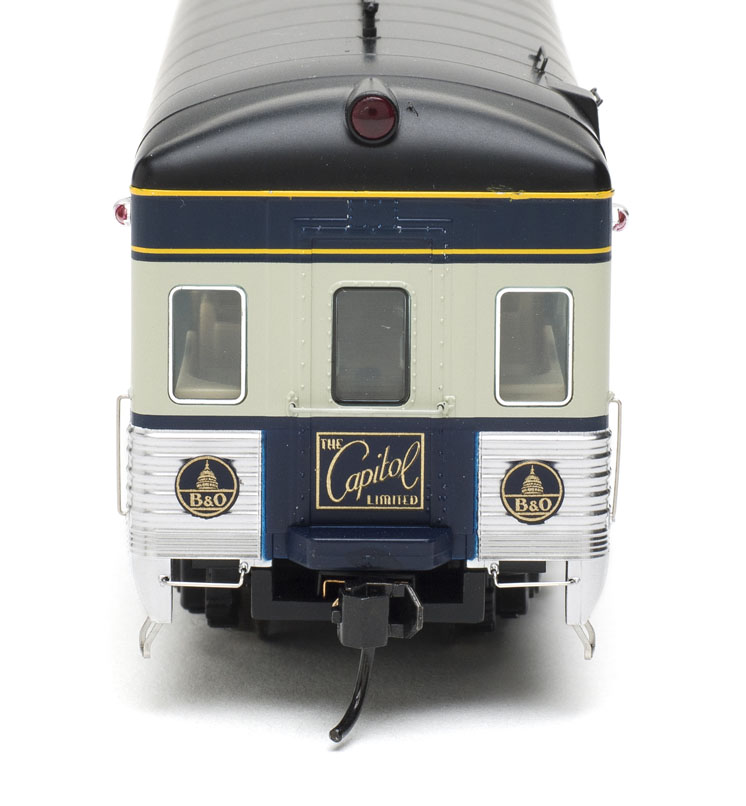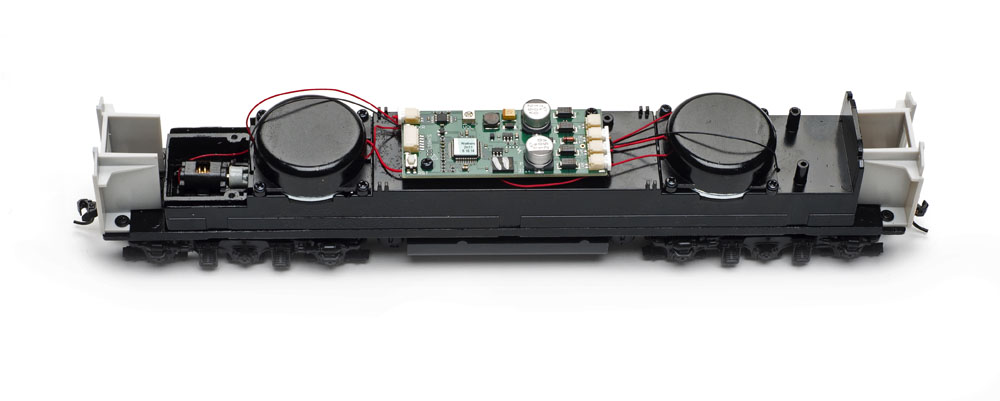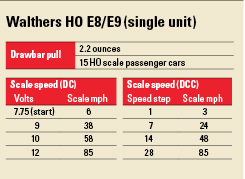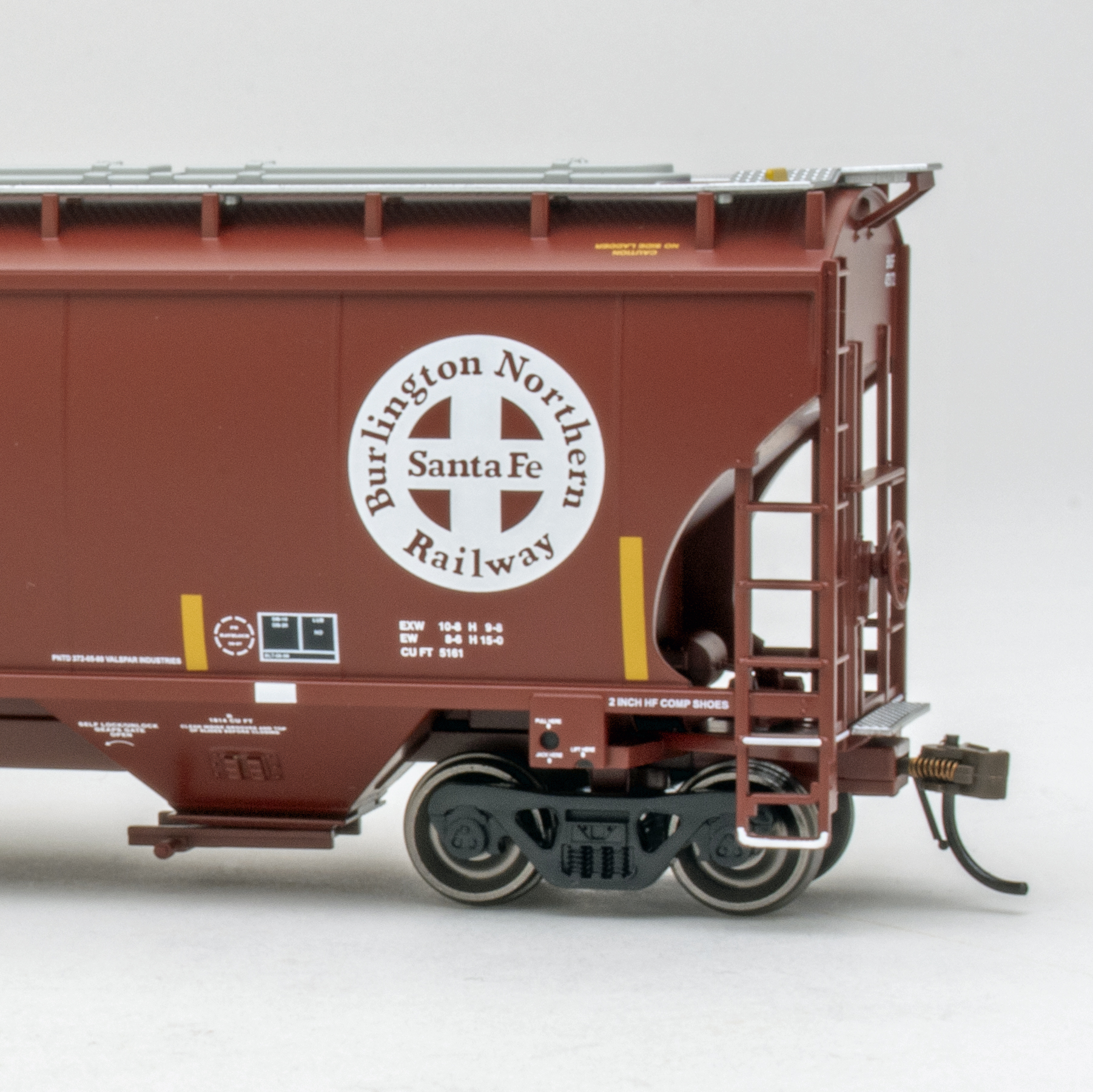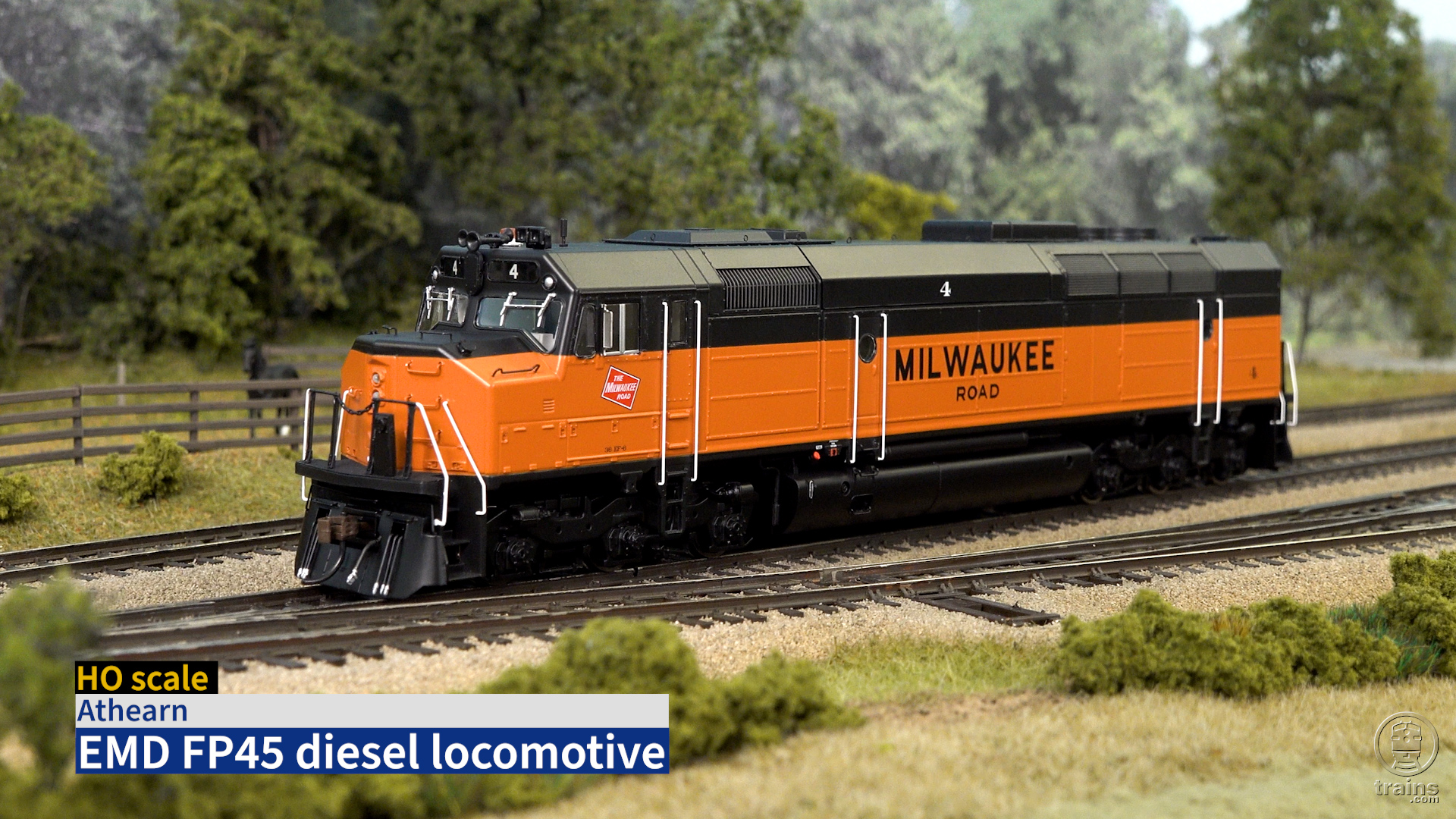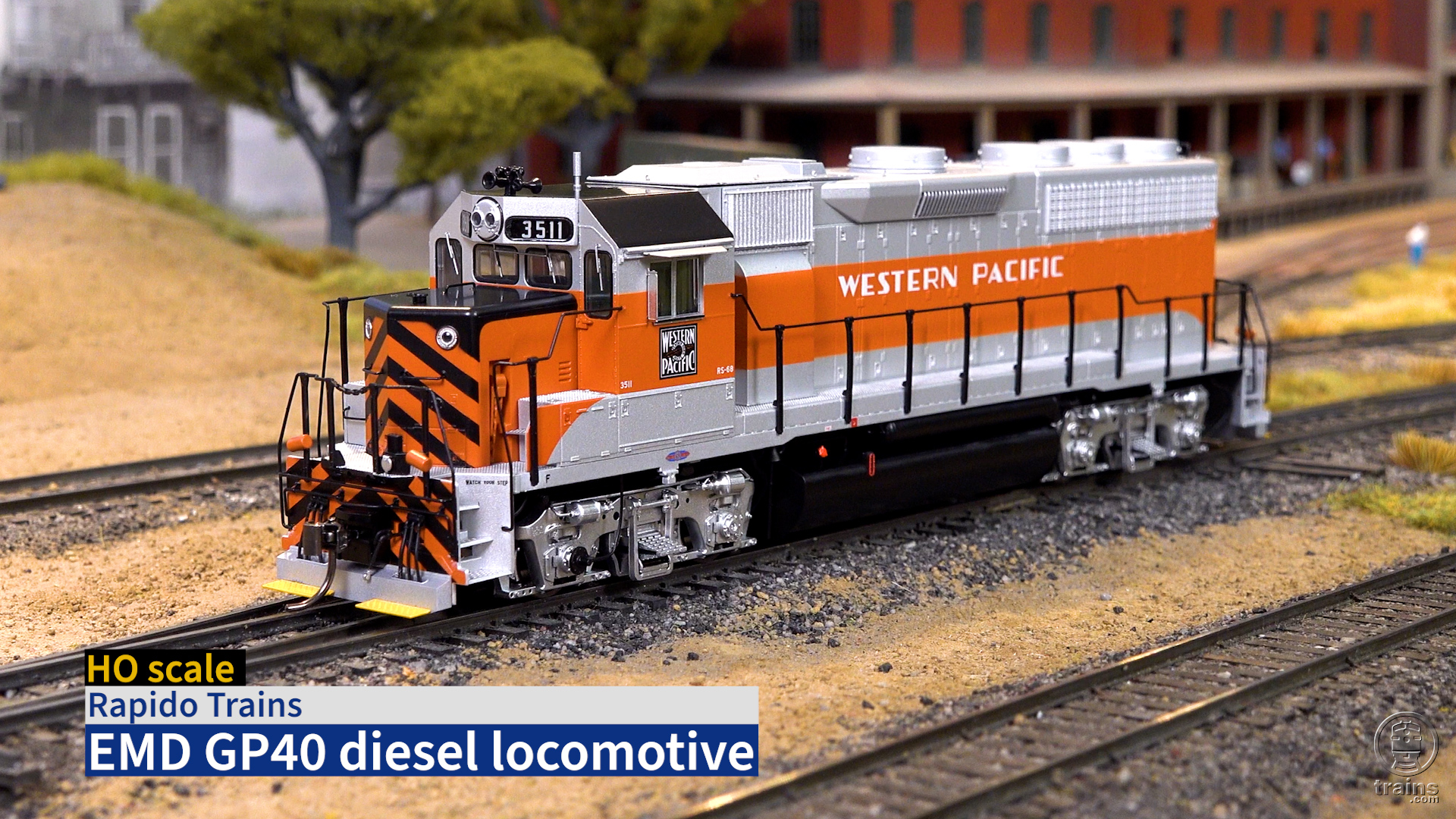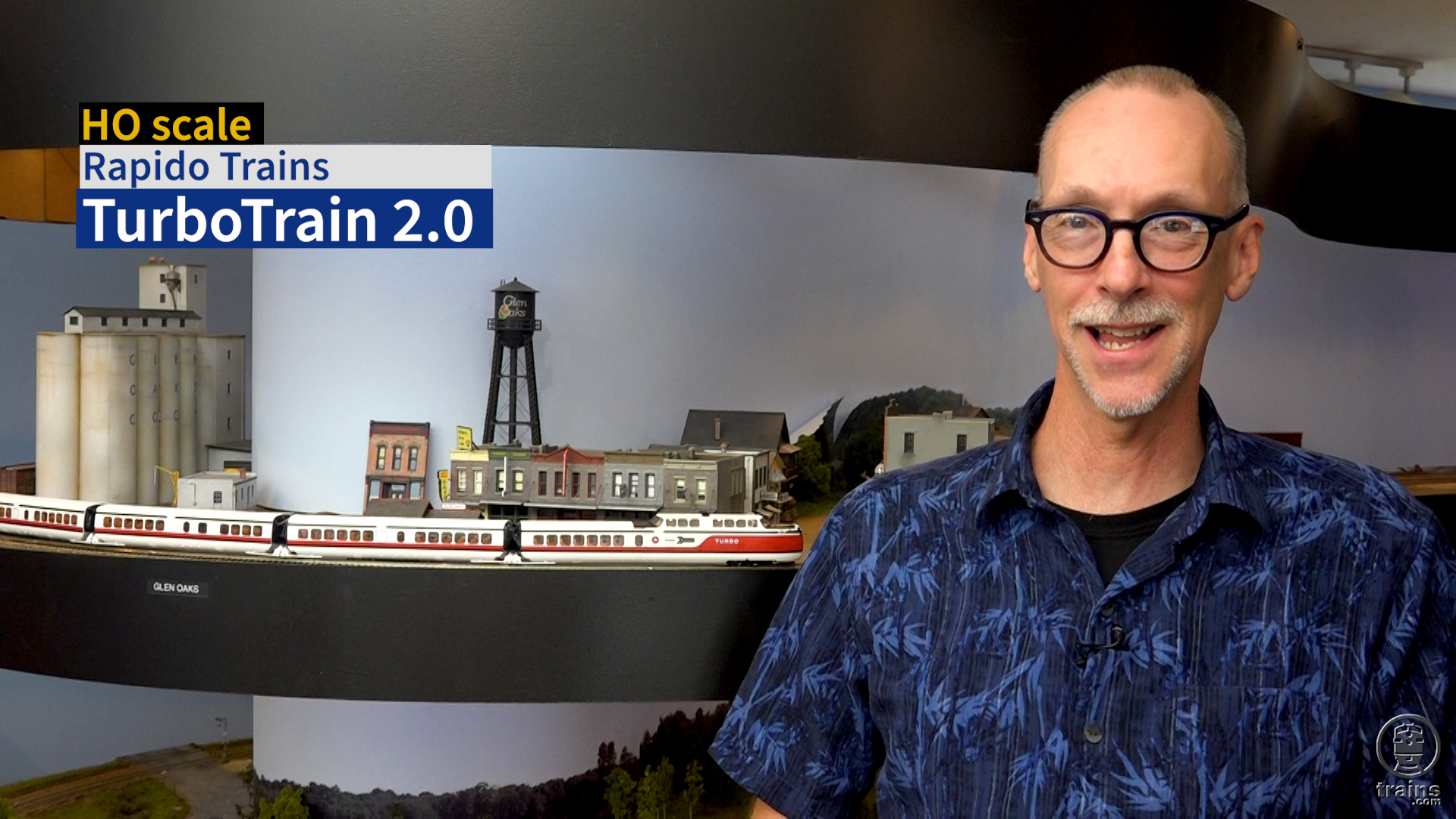The Baltimore & Ohio RR’s flagship train, the Capitol Limited, comes to life in HO scale as Walthers finishes up its accurately detailed model of “The Cap” as it appeared in the late 1950s. The series features newly tooled B&O passenger cars and prototype-specific Electro-Motive E-units that sped the train between Chicago and Washington, D.C. Both the E9A and E8Bm units are powered and available with SoundTraxx Tsunami decoders for sound effects on Digital Command Control (DCC) and direct-current (DC) layouts.
The prototype. Inaugurated in 1923, the Capitol Limited was the signature train of the Baltimore & Ohio RR for 48 years. After World War II and into the 1950s, B&O retired much of its heavyweight fleet in favor of new lightweight, streamlined equipment. The Walthers HO version models the Capitol Limited consist after it was combined with The Columbian in 1958.
In the 1950s, the B&O was the only eastern railroad to offer dome-car service, and a Strata-Dome sleeper served on the Capitol Limited of this era. In addition to a Slumbercoach and other cars, The Cap also gained a Strata-Dome coach from The Columbian. The dome coach was based on a Pullman-Standard design from General Motors’ 1947 Train of Tomorrow. The domes of both cars were 7 inches lower than that of similar cars found on Western roads, such as the Union Pacific, because of the low clearances along the B&O main line.
Some of the cars, including the Budd-built Strata-Dome sleeper and the Pullman-built blunt-end observation car, were purchased new from the Chesapeake & Ohio after that company’s Chessie streamliner train was cancelled. The twin-unit diner was also originally built for C&O, but was soon sold to the New York Central. In turn, the NYC sold the cars to B&O. A comprehensive history of the postwar Capitol Limited can be found in Baltimore & Ohio Passenger Service, 1945-1971 – Vol. 2: The Route of the Capitol Limited by Harry Stegmaier (TLC Publishing).
The B&O ended its passenger service with the advent of Amtrak in 1971. However, in 1981, Amtrak introduced its own Chicago-to-Washington, D.C., Capitol Limited that still runs today.
The models. The HO scale 85-foot cars included in the Walthers series are a Pullman-Standard baggage-dormitory-coffee shop-lounge; a Budd 24 single-, 8 double-bedroom Slumbercoach; a PS City series 56-seat coach; a PS Strata-Dome 42-seat coach; a PS kitchen-dormitory; a PS 56-seat diner; a Budd Strata-Dome 5-roomette, 1-bedroom, 3-drawing room sleeper; a Budd 16-duplex roomette, 4-bedroom sleeper; a PS 10-roomette, 6-bedroom sleeper; and a PS 5-bedroom, buffet-lounge-observation car.
With the exception of the 10-6 sleeper and the Slumbercoach, all the cars are newly tooled. The cars’ dimensions match the prototype inside and out, as compared to prototype drawings and interior diagrams in The Pullman Standard Library and The Passenger Car Library (RPC Publications, Inc.).
The paint and lettering on each car is accurate per prototype photos. The blue, gray, and gold colors used are consistent throughout the set. The plated finish on the cars with fluted sides does a credible job simulating polished stainless steel. Each car includes car name and number water-slide decals.
The PS blunt-end observation car includes an accurate replica of the Capitol Limited tailsign flanked by two separately applied round B&O Capitol Dome heralds. The car also has non-functioning marker lights.
The plastic models follow the same modular construction as other Walthers HO passenger cars, including the kitchen and diner cars reviewed in our October 2015 issue. The walls, ends, and roof are separate, with a one-piece molded interior and some separate wall partitions.
For adding figures, the roofs are removable by using a chisel blade in a hobby knife to disengage the locking tabs along one side. The instruction sheet indicates the location of the tabs.
For me, the Strata-Dome cars are the standouts of The Cap. As with the other cars in the series, all the handrails are factory applied. The domes also include non-functioning models of the roof-mounted searchlights that illuminated the landscape at night, as well as the icebreakers used to protect the domes under low-clearance tunnels and bridges.
Each car features all-wheel track power pickup for the addition of interior lighting. Walthers sells interior lighting kits for $15.95 each. Steel weights between the chassis and interior give the cars heft and complete the lighting circuit.
On straight track the diaphragms almost touch. The cars rolled easily through no. 6 turnouts and 24″ radius curves. User-installed coupler draft-gear boxes allow the cars to handle 22″ radius curves, but this also increases the distance between the cars.
Last of the E units. An HO scale EMD E9A leads the Walthers Capitol Limited. The prototype for our review sample is one of four E9As delivered to the B&O in 1955. The last of EMD’s successful E-units, the 2,400 hp E9A had two 567C diesel engines.
Visually, the prototype E9A is nearly identical to its predecessor, the E8A. The main spotting feature on the E9A is a flush-fitting headlight with a gasket around the headlight case. The Walthers model reproduces this feature.
B&O rostered six E8Bms, as well as 5 E8Am units, that were built using generators and other parts from traded-in, 1937-vintage EA diesels. These locomotives were derated to 2,000 hp compared to 2,250 hp for a new E8.
Both the Walthers E9A and E8Bm match prototype drawings in The Model Railroader Cyclopedia: Vol 2, Diesel Locomotives (Kalmbach Publishing Co., out of print). Both models are specifically detailed to accurately match their B&O prototypes. These most prominent of these details include flush-mounted number boards and the raised B&O herald on the nose door of the E9A.
Many separately applied details complement the well-defined molded detail of the plastic body shell, including wire grab irons, Nathan M5 airhorn, and etched-metal side air intake grills. The plastic truck sideframes feature sharp detail, including the brake cylinders, journal covers, and a General Steel Castings builder’s mark molded in. The E9A unit’s front truck correctly has an automatic train stop (ATS) pickup shoe on the engineer’s side.
Both locomotives are accurately painted, according to prototype photos. The colors match those found on the passenger cars. Lettering is clearly printed, including the PE-6 and PE-4X classification, under the road number, on the E9A and E8Bm respectively.
Performance. Removing the couplers on either E unit allowed me to lift the plastic body shell off the die-cast metal chassis. The models feature the same upgraded mechanism as other recent Walthers E units. All the metal wheels pick up track power and all the axles are powered.
The A-B pair can easily handle a typical Capitol Limited consist. Our review sample hauled our 10-car test train up a 3 percent grade and negotiated number 6 turnouts through a yard ladder. Walthers also sells an additional A-B set and single A unit.
During speed tests in DC and DCC, both the A and B unit accelerated smoothly, as shown in the charts at right. The model’s top speed matches one of the prototype’s gear ratios. However, our B unit accelerated about 5 scale mph faster than our A unit during DCC testing. I easily speed-matched the two units by lowering the forward and reverse trim configuration variables (CVs 66 and 95) for the B unit. Fine-tuning the decoder’s motor control, including setting up speed tables, and many other topics are covered in the free online user’s manuals available at www.SoundTraxx.com.
Both units are factory-programmed to address 3, but I easily changed their addresses to their locomotive numbers, then advance consisted them under a single address. With both locomotives m.u.’d, I then programmed CVs 21 and 22 so that I had control of the functions under the consist address.
Two round 28mm speakers mounted on the chassis provide clear sound even at the maximum volume setting. I could also independently set the volume level for each effect.
The Tsunami accurately reproduced the sounds of the prototype, from the staggered startup of twin 567 diesel engines to the melodious blast of the Nathan M5 air horn. Other effects include a coupler clank and dynamic brake fan. I appreciated that Walthers had the Tsunami train brake feature set up by default. In addition to triggering a brake squeal/release sound, pressing F9 would actually apply or release the brake independently from the throttle.
Function buttons also control the A unit’s headlight, headlight dimmer, and number boards. All lighting is provided by light-emitting diodes (LEDs).
When operated on a DC layout, the locomotives’ effects are mostly automatic. The engine rpm sounds rev up or down with the throttle setting. A forward horn signal (two toots) or reverse signal (three toots) sounds before the locomotive moves. The bell rings when the locomotive moves under 20 scale mph. Unfortunately, the sound is interrupted whenever the direction button is switched. Using an analog sound controller, such as an MRC Tech 6, would provide more function control and programming options for DC users.
The rumble of the 567 diesel engines brought a smile to my face as I ran the locomotive on our DCC equipped layout. For many of us, this HO scale Capitol Limited is the closest we’ll get to being trackside as a B&O Strata-Dome Dieseliner speeds by. Walthers got the details right for this iconic train.
Price: DCC sound equipped locomotives: $569.98 (E9A/E8Bm set), $299.98 (E9A unit only).
DC, no sound locomotives: $369.98 (E9A/E8Bm set), $199.98 (E9A unit only). Multiple road numbers available. Passenger cars: $69.98 to 79.98 each.
Manufacturer
Wm. K. Walthers Inc.
5601 W. Florist Ave.
Milwaukee, WI 53218
www.walthers.com
Era: 1958 to 1965 train consist
E-unit features
▪▪All-wheel drive and pickup
▪▪Constant LED lighting
▪▪Die-cast metal chassis
▪▪Five-pole skew-wound motor with dual brass flywheels
▪▪Metal Proto-Max knuckle couplers at correct height
▪▪Painted crew figures in cab
▪▪Scale 36″ metal wheels in gauge
▪▪Weight: 19 ounces
Car features
▪▪Body-mounted Proto-Max couplers at correct height
▪▪Minimum radius: 24″ (22″ with optional draft gear)
▪▪Scale 36″ metal wheels in gauge
▪▪Weight: 7 ounces, matches NMRA RP-20.1 (The baggage-dorm-coffee shop-lounge and 56-seat coach are .5 ounce too light and the Strata-Dome sleeper is .5 ounce too heavy)





